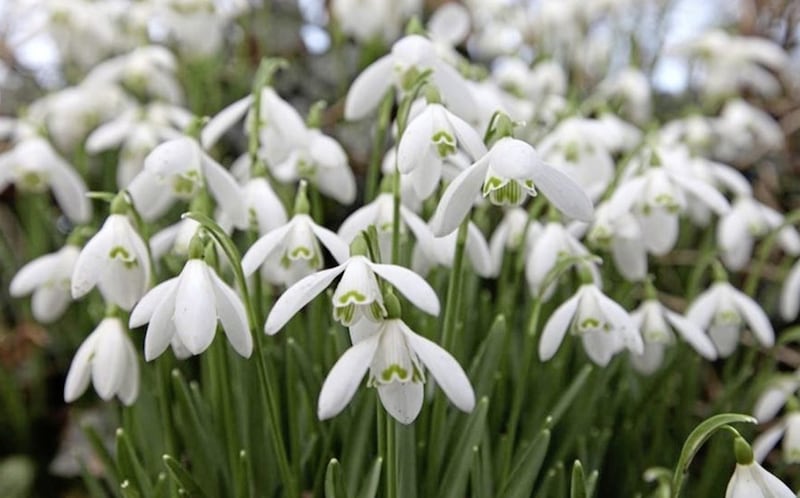Up close, the flowers of the snowdrop are as beguiling as any. The three delicate-looking white petals droop from a finger-length stem and overlap one another in a half embrace to create a bell-like flower that has a green patch on the tip of the inner segments. Candlemas bells, Mary’s taper, snow piercer, February fairmaids and dingle-dangle are just some of the names used historically for snowdrops, the most common of which, out of hundreds of varieties, is Galanthus nivalis.
But despite their exquisiteness at an intimate distance, snowdrops look their best as a proverbial carpet. Most often found in a shady, slightly damp, woodlands, it takes decades for clumps to converge and cover the humus-rich ground, creating a sea of pristine white as the dark days of winter brighten into spring.

To achieve this effect requires a number of favourable circumstances, the most vital of which is time. Planting hundreds, even thousands of snowdrops won’t guarantee a carpet. Instead, you must let the plants do the work, seeding themselves and ‘naturalising’, thereby creating the impression that they’ve always been there.
There are some ways in which you can accelerate the process, such as lifting and dividing clumps while they are still ‘in the green’ – ie during or immediately after flowering. However, pretty much without exception, the best snowdrop displays are those which were first sown many decades, if not centuries ago.
Here some of the best places both nearby and farther afield where you will witness the finest snowdrop displays over the coming weeks:
- The Argory and Springhill: Two National Trust properties in the north are famed for celebrating this diminutive February favourite. The Argory, on the banks of th Blackwater River near the Moy in Co Armagh, and Springhill, close to the north-west shores of Lough Neagh in Co Tyrone, will be open on weekends throughout this month, enabling visitors to both country estates the opportunity to experience what are arguably Ulster’s two finest snowdrop walks.
- Altamont Gardens: Galanthophiles from across Ireland and beyond are drawn to Co Carlow every February to view what is billed as the country’s ‘largest public collection of snowdrops’. There are more than 150 named varieties in bloom at Altamont Gardens at this time of year, each with its own story, and many with local connections or strong associations with other parts of the island. choice picks include Galanthus ‘Mark’s Tall’, discovered in Co Antrim by Mark Smyth and as its name suggests a comparatively large specimen at some 30cm. Also taller than Galanthus nivalis, the common snowdrop, is G. ‘Drummond’s Giant’, a variety first identified a matter of miles from Altamont and subsequently brought to the estate by Corona North, the lady responsible for building this extensive collection.
- Castle Kennedy: A short hop across the North Channel you’ll find Castle Kennedy Gardens on the estate of the Earl and Countess of Stair. Here each weekend this month through to the end of March, you can trek a special three-mile route lined with an abundance of snowdrops. Dander along the banks of the ominous-sounding Black Loch, which provides the perfect foil to magic expanses of pure white. The extensive Galanthus collection owes a lot to the 10th Earl of Stair, who was a particular snowdrop enthusiast and responsible for planting more than a dozen varieties of snowdrops in the estate’s walled gardens. Castle Kennedy boasts its own unique variety in Galanthus nivalis ‘Lochinch’, named after the earl’s castle.